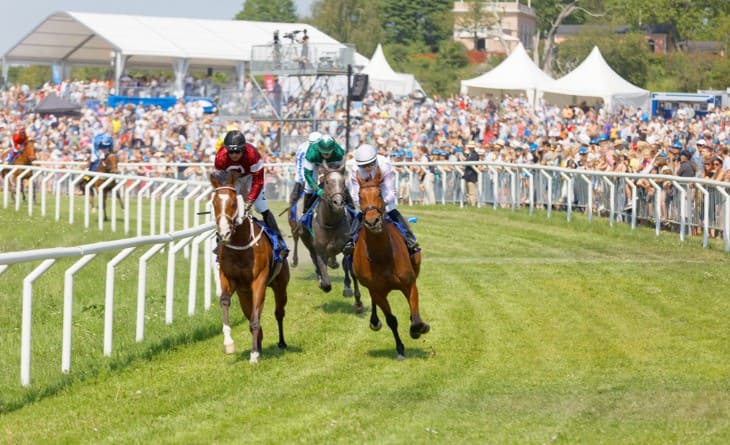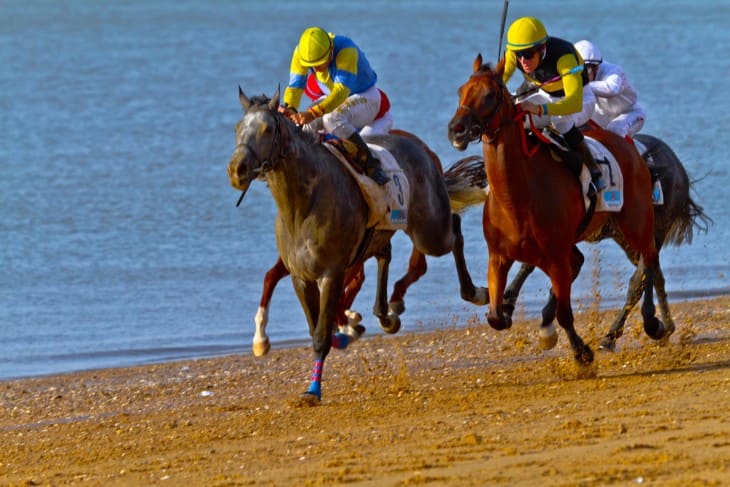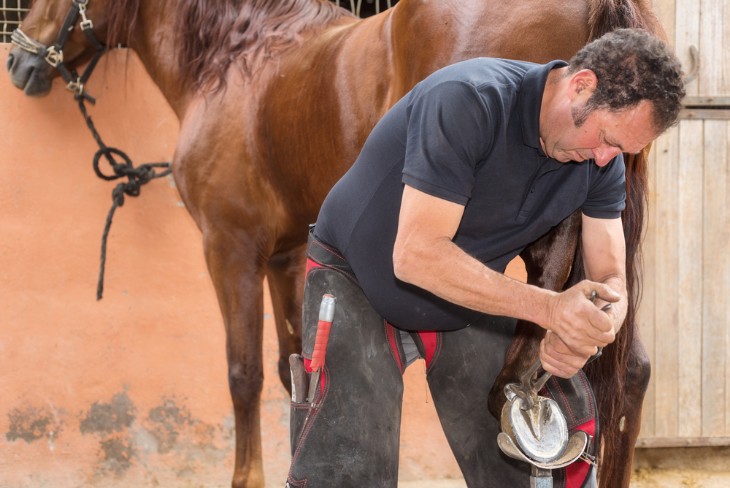The Role of a Farrier
A farrier is a skilled professional responsible for the care and maintenance of a horse's hooves and lower limbs. This role is pivotal in the world of horse racing, where equine athletes depend on soundness and performance. The primary duty of a farrier is to ensure the proper trimming and shoeing of a horse's hooves. This entails regular visits to the stables to inspect the hooves, assess their condition, and determine if any corrective measures are needed.
One of the key aspects of the farrier's role is to understand the anatomy of a horse's hoof thoroughly. Hooves are complex structures with multiple layers and sensitive components. Farriers must be able to identify any issues, such as overgrowth, imbalances, or injuries, that could impact a horse's gait and overall well-being. Through meticulous work, a farrier can help prevent lameness and injuries in racehorses, which is essential for their peak performance on the track.
The history of farriery is a fascinating journey that dates back thousands of years. The term "farrier" itself has ancient origins, derived from the Latin word "ferrum," meaning iron. Early farriers were known for their blacksmithing skills, as they not only cared for horses' hooves but also crafted the metal horseshoes. In ancient civilizations like Rome, the importance of skilled farriers was evident in their role in maintaining the mobility of cavalry units.
As time progressed, the role of farriers evolved, and their specialization in equine hoof care became more pronounced. In medieval Europe, farriers were integral to the functioning of society, providing not only hoof care but also contributing to the development of weaponry and agriculture.
Becoming a Farrier
Becoming a farrier is not a pursuit taken lightly. It requires dedication, rigorous training, and a deep passion for equine care. In the United Kingdom, prospective farriers typically undergo a formal apprenticeship that lasts for several years. During this apprenticeship, aspiring farriers work alongside experienced mentors, gaining practical experience in hoof care and blacksmithing. The goal is to develop a comprehensive understanding of horse anatomy and the skills needed to provide proper hoof care.
Once the apprenticeship is completed, individuals must seek formal qualification through examinations. This process often involves both practical and theoretical assessments to ensure that the aspiring farrier possesses the necessary knowledge and proficiency. Additionally, farriers in the UK are required to be registered with the Farriers Registration Council, which regulates the profession to maintain high standards of care and expertise.
The Farrier's Workshop
A farrier's workshop, commonly referred to as a forge, is the heart of their operation. It is here that they craft and modify horseshoes, repair tools, and prepare for their visits to stables. The forge is equipped with a variety of specialized tools, including anvils, tongs, and a coal or gas forge for heating and shaping metal. Horseshoes, made of steel or aluminium, are carefully shaped to fit each horse's hoof precisely. Modern farriers also use advanced equipment like radiographs to diagnose and monitor hoof conditions.
Maintaining the equipment in top condition is crucial, as it directly affects the quality of care a farrier can provide. Blunt or improperly maintained tools can lead to uneven hoof trimming or shoe fitting, potentially causing discomfort or injury to the horse. Therefore, farriers dedicate time to regular maintenance and upkeep of their tools to ensure they can perform their duties with precision and efficiency. The workshop is where the practical skills of a farrier come to life, ensuring the well-being and performance of racehorses.

Understanding Equine Anatomy
A profound understanding of equine anatomy is fundamental for a farrier. It is the cornerstone upon which their craft is built. The horse's hoof, in particular, is a marvel of engineering. It consists of several layers, including the outer hoof wall, the sensitive laminae, and the coffin bone. Farriers must comprehend the function and interaction of these structures to provide effective hoof care.
The outer hoof wall, made of keratin, forms a protective shell around the sensitive inner structures. Farriers must carefully trim and shape this wall to maintain the hoof's balance and prevent issues like overgrowth or cracks. The sensitive laminae, a complex network of tissues, connect the hoof wall to the coffin bone. Any damage or inflammation in this area can lead to lameness, making it imperative for farriers to handle hooves with utmost care.
Farriery in Horse Racing
The connection between farriery and horse racing is profound. In the high-stakes world of racing, every fraction of a second matters. Farriers play a vital role in optimizing a racehorse's performance. The horseshoes they craft and fit are not one-size-fits-all; instead, they are tailored to suit individual horses' needs. Factors such as the horse's gait, racing surface, and specific hoof conditions are considered when selecting and customizing shoes.
Moreover, farriers are essential in preventing injuries among racehorses. The stress and impact endured during races can take a toll on a horse's hooves and limbs. Regular maintenance by a skilled farrier ensures that the horse's hooves remain in optimal condition, reducing the risk of injury and lameness. In essence, farriery in horse racing goes beyond routine hoof care; it directly impacts the horse's performance, well-being, and longevity in a highly competitive sport. As we delve further into this topic, we will explore the nuances of specialized shoeing for racing horses and the farrier's daily routines in this demanding environment.
Farriery Techniques
Farriery techniques are a blend of science and craftsmanship. A skilled farrier employs a range of methods to ensure that a horse's hooves remain healthy and balanced. The horseshoeing process typically begins with trimming the excess hoof growth. This step is crucial as overgrown hooves can lead to imbalance and discomfort. Farriers use specialized tools, like hoof knives and rasps, to shape the hooves meticulously. The objective is to create a level and well-maintained surface that can accommodate the horseshoes.
Once the hooves are trimmed, the next step is shoe fitting. This involves selecting the appropriate horseshoes and customizing them to fit the horse's hooves precisely. Horseshoes come in various designs and materials, each suited for different purposes. Farriers take into account factors such as the horse's size, hoof condition, and the type of racing surface when choosing the right shoes. The shoes are then heated and shaped to match the curvature of the hooves before being securely fastened with nails. Farriers must ensure that the shoe is neither too loose, which can lead to instability, nor too tight, which can cause discomfort.
Specialized Shoeing for Racing Horses
Racing shoes are designed with specific objectives in mind. One common type is the lightweight aluminium racing plate, which minimizes the additional weight on the horse's hooves, allowing for quicker acceleration. These shoes are also fitted with cleats or studs to provide traction on different racing surfaces, whether it be turf, dirt, or synthetic tracks.
In some cases, horses may require even more specialized shoeing. For example, horses with certain gait abnormalities may need corrective shoeing to help them move more efficiently and comfortably. The goal is always to enhance performance and reduce the risk of injury. Farriers work closely with trainers and veterinarians to assess the needs of each racehorse, ensuring that the shoeing approach is tailored to the individual horse's requirements. This level of customization and attention to detail is what sets farriery in the context of horse racing apart, contributing to the success and well-being of these exceptional athletes.
The Farrier's Daily Routine
A day in the life of a farrier is a blend of precision and unpredictability. Typically, farriers start their day by reviewing their appointments and planning their routes. They visit various stables and racing yards, each with its set of horses and hoof care requirements. Upon arrival, they begin by inspecting the horses' hooves, looking for any signs of injury, overgrowth, or lameness. This initial assessment guides them in deciding whether the horse requires trimming, shoeing, or any corrective measures.
Once the hoof work is completed, the farrier may provide advice to the horse's owner or trainer on ongoing care, nutrition, or any additional steps necessary to maintain hoof health. This daily routine is physically demanding, requiring agility and strength, but it is also deeply rewarding for farriers who take pride in the well-being of the horses under their care.
Building trust with horses is a cornerstone of farriery. Horses are highly sensitive animals, and their cooperation is crucial during hoof care procedures. Farriers spend time getting to know the horses they work with, understanding their temperaments and preferences. This relationship-building is a delicate process that involves patience and gentle handling. Over time, horses learn to trust their farriers, making the process smoother and less stressful for all involved.

Advancements in Farriery
The field of farriery has witnessed notable advancements over the years, driven by a combination of science, technology, and a deeper understanding of equine biomechanics. Modern farriers now have access to a range of sophisticated tools and materials that enhance their ability to provide optimal hoof care. One such advancement is the use of radiography or X-rays to diagnose and monitor hoof conditions. This technology allows farriers to visualize the internal structures of the hoof, identifying issues that might not be apparent from external inspection alone. It aids in precise and evidence-based decision-making when it comes to trimming and shoeing.
Furthermore, the development of composite materials for horseshoes has introduced new possibilities in farriery. These materials are not only lightweight but also durable, offering an alternative to traditional metal shoes. Farriers can customize these composite shoes to suit a horse's specific needs, enhancing performance and comfort. Innovations in adhesives and hoof boots have also expanded the repertoire of farriers, allowing for creative solutions to unique hoof conditions. These advancements underscore the dynamic nature of farriery, where traditional craftsmanship meets cutting-edge technology to benefit the well-being of horses.
Conclusion
In conclusion, the life of a farrier is a blend of tradition, skill, and adaptation to the evolving needs of the equine world, particularly in the context of horse racing. These professionals play a pivotal role in maintaining the soundness, health, and performance of racehorses. Their meticulous work in hoof care, coupled with their dedication to continuous learning and embracing modern advancements, ensures that horses remain in optimal condition to compete at their best.
For more information:








